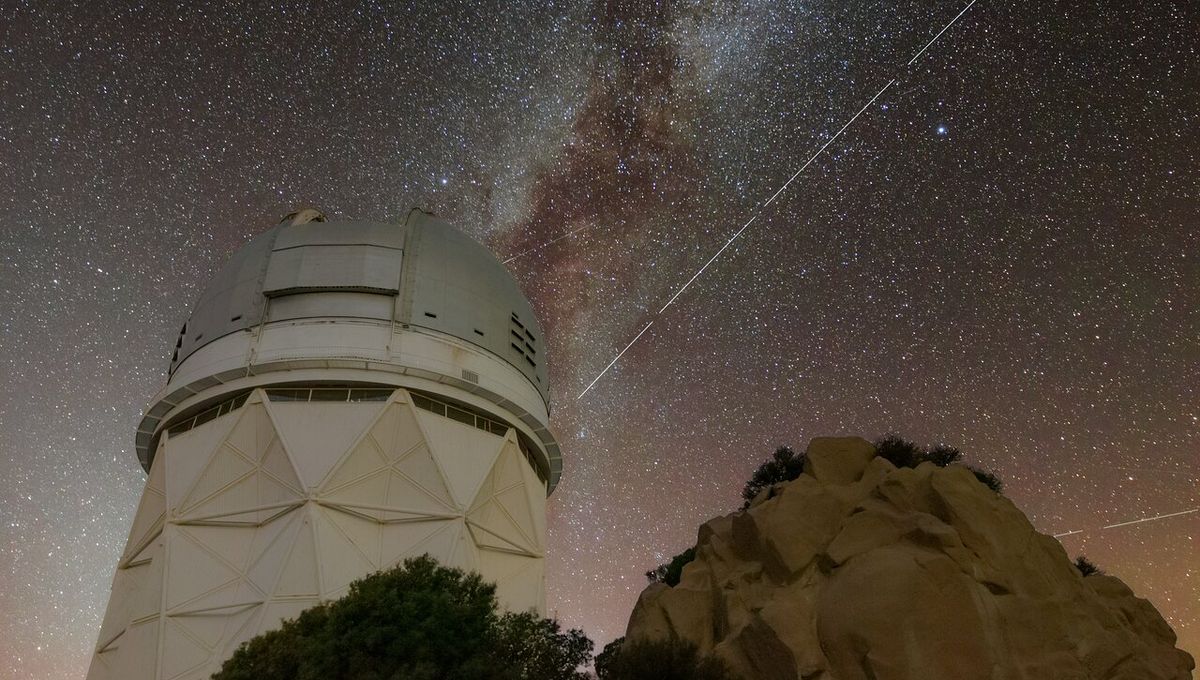
Back in 2022, AST Space Mobile launched BlueWalker 3, a new prototype of telecommunication satellite that can send satellite internet directly to regular mobile phones with no modification to their hardware. It is made by an enormous antenna of 64 square meters (693 square feet). This is the largest commercial antenna ever deployed in low Earth orbit. So it is not surprising that this satellite appears to be one of the brightest objects in the sky, according to a new study.
Astronomers measure the brightness of an object using a quantity called magnitude. The brighter the object, the smaller the number, even going into negative numbers. The Sun, Moon, Venus, Jupiter, and Sirius all have negative magnitudes. A star like Vega has a magnitude around 0. Polaris, the North Star, has a magnitude around two. That’s usually the limit of stars we can see in a city. In a dark sky region, we can see objects all the way down to around magnitude six.
It depends on the darkness of the sky and where you are on Earth, but a few thousand stars are visible to the naked eye. BlueWalker 3 is not naturally bright, what we see is the light from the Sun reflected back to Earth. At the right angle, it reached a magnitude of 0.4. That is in the top-15 brightest objects in the sky. That’s brighter than Betelgeuse or Saturn.
“BlueWalker 3 is a big shift in the constellation satellite issue and should give us all reason to pause,” said Piero Benvenuti, Director of the International Astronomical Union’s Center for the Protection of the Sky (IAU CPS), said last November in a statement.
And it is not just the satellite itself. Even its Launch Vehicle Adapter was extremely bright, four times brighter than the guidelines from the International Astronomical Union (IAU) for objects. Since SpaceX began building its mega-constellation, with satellites way brighter than the guidelines, streaks have begun appearing in cosmic observations.
The dramatic increase in number of satellites is contributing to light pollution. And the feelings related to the lack of access to a true night sky have even got their own word: noctalgia.
And it is not just visual. Transmitting phone signals from space also impacts radio astronomy and the ability to use radio dishes to study distant galaxies or monitor dangerous asteroids. This could be a major problem for existing and even upcoming facilities like the Square Kilometer Array Observatory (SKAO).
“Astronomers build radio telescopes as far away as possible from human activity, looking for places on the planet where there is limited or no cell phone coverage. Frequencies allocated to cell phones are already challenging to observe even in radio quiet zones we have created for our facilities. New satellites such as BlueWalker 3 have the potential to worsen this situation and compromise our ability to do science if not properly mitigated,” said SKAO Director-General Philip Diamond.
“This is a key reason why the SKAO is deeply involved in the IAU CPS and promoting the equitable and sustainable use of space.”
The author of the new study, Sangeetha Nandakumar, and her team argue that before satellite companies launch crafts into space, they ought to work to reduce the impact they will have on the night sky and astronomy. AST Space Mobile is planning to launch 90 more of these satellites.
“Impact assessments for satellite operators prior to launch could help ensure that the impact of their satellites on the space and Earth environments is critically evaluated,” the researchers wrote in the paper.
“We encourage the implementation of such studies as part of launching authorization processes.”
The research is published in the journal Nature.
Source Link: Satellite Launched Last Year Becomes One Of The Brightest Things In The Sky